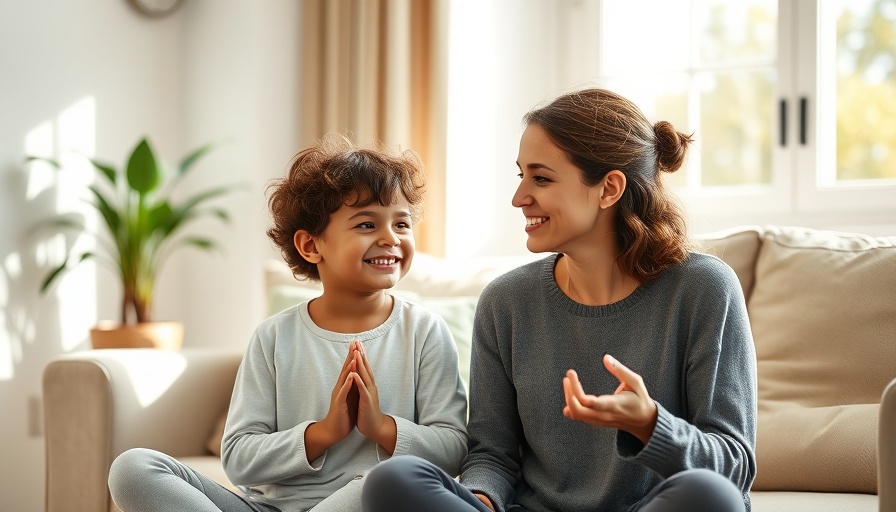
Modeling Mindfulness: A Answer To Modern Parenting Challenges
In the fast-paced world we live in, with distractions at every turn, parenting can feel overwhelming. For adults seeking healthy lifestyle tips, especially when communicating with children, understanding how to model mindfulness during these interactions can be transformative. Mindfulness is not just a buzzword—it's an effective means to foster connection and understanding between adults and children.
Understanding Children’s Perceptions
Kids are astutely aware of their environment; they pick up on subtle cues from adults. Studies have shown that when children perceive their parents or educators as mindful and present, it can positively influence their emotional and social development. As stated by mindfulness educator Alex Tzelnic, modeling mindfulness in our communications can help children learn necessary social behaviors without feeling criticized—a balance many parents strive to achieve.
The Power of Feedback
Remember the last time you offered well-meaning advice to a child and were met with eye-rolling? Feedback can often seem harsh, especially when offered without context. The key lies in how we present this feedback. Tzelnic suggests that using mindful language, characterized by clear, calm, and kind tones, gives children the impression that they are being seen and valued. By creating a 'Mindful Language Cheat Sheet', parents and educators can prepare phrases that encourage children to absorb feedback positively and constructively.
Studies That Speak Volumes
The educational community has conducted studies backing the impact of mindfulness in the classroom. One significant study, involving 599 high school students, indicates that those who perceived their teachers as mindful saw not just improvements in their mindfulness and compassion levels, but also in their overall performance. This shows that the environment created by mindful communication can lead to significant developmental gains.
Implementing Mindful Practices at Home
Start by identifying moments during your day when communication is vital—be it during homework help or family meals. Approach conversations with intention. Instead of jumping directly into feedback, establish a calming atmosphere. Listen attentively and validate their feelings, which creates a safe space for dialogue. Additionally, utilizing phrases that reflect mindfulness can shift the child's response from defensive to open and engaged.
Tips for Model Mindfulness
Incorporate mindful techniques into your daily interactions:
- Mindful Breathing: Before engaging in difficult conversations, take a few deep breaths. This can help center both the adult and the child for the discussion.
- Active Listening: Show that you are fully present by maintaining eye contact and confirming their thoughts.
- Gentle Encouragement: Use kind language when guiding children, turning potential criticism into constructive insights.
Creating a Positive Impact
By effectively modeling mindfulness, caregivers not only enhance their relationship with children but also contribute to their emotional intelligence. Parents can instill values of empathy and respect, proving that the relationship dynamics can change by focusing on communication styles. When parents model a calm demeanor, children are more likely to mirror this behavior, leading to a harmonious home environment.
Conclusion: Take Action for Mindful Parenting
As adults, we hold the key to shaping the ways children communicate and navigate their emotions. Modeling mindfulness in every conversation opens countless doors for growth, compassion, and understanding. If you’re interested in learning more about practical strategies to enhance communication and foster mindfulness in everyday situations, consider subscribing to resources that provide courses and tools for cultivating these skills. Take that step today for a healthier, more connected family life.
 Add Row
Add Row  Add
Add 




Write A Comment